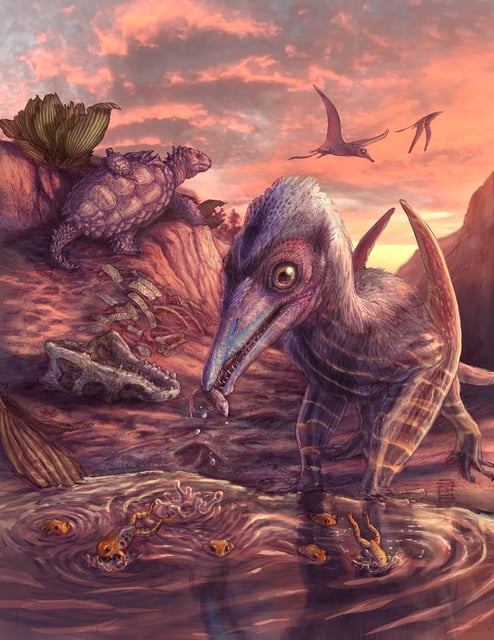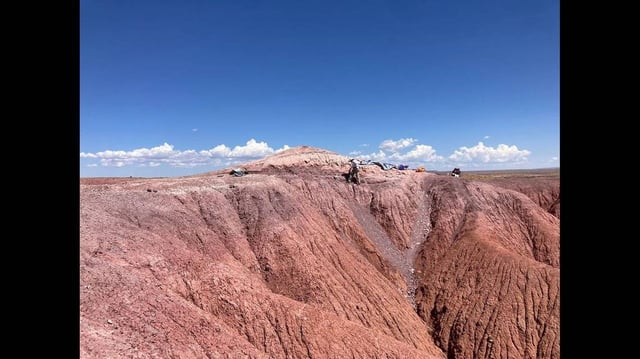Overview
- Eotephradactylus mcintireae is formally described in Proceedings of the National Academy of Sciences as North America’s oldest known pterosaur, dating to about 209 million years ago.
- The species name, meaning “ash-winged dawn goddess,” honors the volcanic ash that preserved its fossils and FossiLab volunteer Suzanne McIntire, who uncovered its jawbone in 2011.
- Distinctive wear patterns on its varied tooth shapes indicate a specialized diet of armored fish in braided river channels.
- Excavations of the Owl Rock Member at Petrified Forest National Park yielded over 1,200 fossils representing 16 vertebrate groups, capturing a diverse pre-extinction community on Pangaea.
- This find fills a 13-million-year gap in terrestrial fossil records before the end-Triassic extinction and supports ongoing analysis of this transitional ecosystem.

